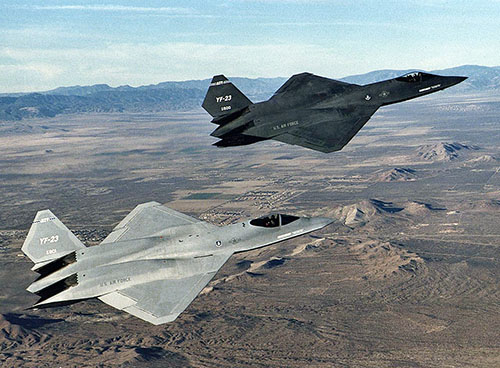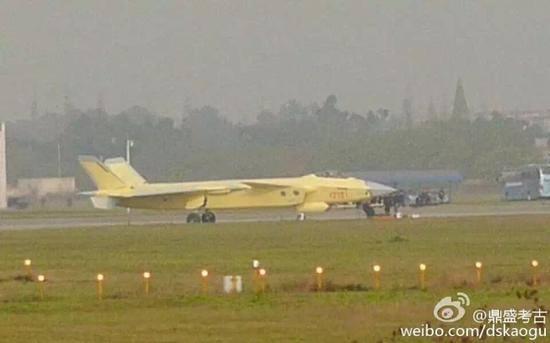The first fifth-generation Chinese fighter, Chengdu J-20, may already be in production, albeit at a slower pace. The official Beijing news agency, Xinhua, published a few hours ago the first photo of the new mass-produced platform.
The Chengdu J-20 project, a fifth-generation fighter that took off for the first time in January of the 2011, is defined by the Pentagon as "a long-range platform capable of penetrating heavily defended environments." According to the Chinese it could enter service with Initial Operational Capacity within the 2018 "with performance similar to the F-22 but with the operating costs of the F-35".
According to the Russian press, the J-20 would present similarities to the MiG 1.44 technology demonstrator (in turn the latter reminds the EFA-2000). For the West, instead, Chengdu J-20 is inspired by the fantastic Northrop YF-23 (photo below), the only prototype proposed together with the YF-22 for the project Advanced Tactical Fighter.
For the Chengdu J-20, at least six variants are foreseen: long-range interceptor, dogfight and escort, ground attack, long-range reconnaissance, electronic attack and launch pad for anti-satellite missiles. The J-20 is also currently equipped with two Russian-made turbojets, although the line fighter should be equipped with a conception engine and national production.
 Drawing ideas and projects from other countries seems to be a common practice for the Chinese. Just think of the same concept of having two fighters stealth for different types of missions it is the same as in the United States: F-22 / J-20 for the supremacy (domain) plane and F-35 / J-31 for the bombing, Close Air Support and tactical support. In 1992, China bought some Su-27SKs from Russia and then presented, fifteen years later, the J-11B, a shamelessly identical version of the Russian supercaccia.
Drawing ideas and projects from other countries seems to be a common practice for the Chinese. Just think of the same concept of having two fighters stealth for different types of missions it is the same as in the United States: F-22 / J-20 for the supremacy (domain) plane and F-35 / J-31 for the bombing, Close Air Support and tactical support. In 1992, China bought some Su-27SKs from Russia and then presented, fifteen years later, the J-11B, a shamelessly identical version of the Russian supercaccia.
But the copies do not end there. According to the Russians, China, in violation of intellectual property agreements, would have cloned the Su-33 project, the S-300 air defense system, the drawings of the most powerful artillery rocket launcher in the world, the BM-30 Smerch and the specifications of the 152 mm 2S19 self-propelled howitzer Msta.
To date, the main problem with the J-20 is related to its propulsion system. Despite the efforts, the Chinese have not yet developed jet engines capable of achieving the performance of the Pratt & Whitney F119 and F135, which power the F-22 respectively. Raptor and the F-35 lightning of Lockheed Martin. Probably, the Chinese are aiming to exploit the technology of Russian turbofans (NPO Saturn AL-41F1) that equip Su-35E (Beijing has purchased twelve) to develop a new propulsion system.












